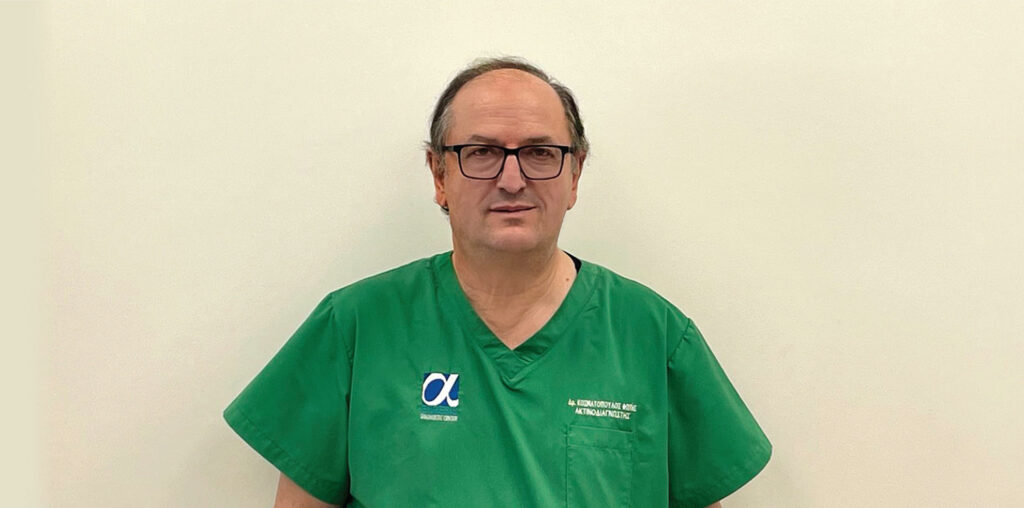One in three women and one in five men over 50 years of age will suffer an osteoporotic fracture

by Dr. Fotis Kosmatopoulos
Osteoporosis is the most common disease of bone metabolism. It is characterized by low bone mass and micro-architectural deterioration of the bone structure, resulting in reduced strength, increased fragility, and increased risk of fracture.
It is one of the biggest public health problems, with huge socio-economic consequences and is characterized as “the scourge of insurance funds”. One in three women and one in five men over 50 years of age will suffer an osteoporotic fracture.
When osteoporosis starts and who it affects
Osteoporosis occurs more often in women, after or even before menopause. However, in recent years, there has been an increasing trend of the disease in men as well. Children can also develop low bone mass because of medication and / or other diseases associated with it.
Nevertheless, osteoporosis is a disease affecting mainly the elders, especially those over 65. At younger ages it is associated with pathological conditions – mainly hypogonadism – and with certain medications.
Osteoporosis is divided into:
- Post-menopausal:
- Senile
- Secondary.
Causes for secondary osteoporosis include hyperparathyroidism, rheumatoid arthritis, hypogonadism, hyperthyroidism, and malabsorption syndrome.
Secondary osteoporosis can also occur in patients taking long-term medications such as glucocorticoids, thyroid hormone at a higher dose than normal for the treatment of hypothyroidism, antiepileptic, or heparin.
However, there are other factors that increase the risk of low bone mass, such as:
- Individuals older than 50
- Early menopause, delayed menarche, hysterectomy
- Smoking
- Sedentary lifestyle
- Womankind
- Poor diet with low dairy
- Alcohol and coffee abuse
- Low body weight
- White race
- Family health history
Osteoporosis is also related to heredity and for its prevention proper nutrition, physical exercise, moderation of alcohol and coffee intake and smoking cessation as well as strong bones during childhood, are essential.
Silent disease
Osteoporosis is asymptomatic with gradual loss of bone mass and usually has no symptoms until the first fracture occurs, usually after a mild injury.
About 40% of fractures occur in the spine, 20% in the hips, 20% in the radius-wrists and 20% in the other bones. Although osteoporosis is considered a disease that mainly affects women, it also greatly affects men with 30% osteoporotic fractures of the hips and 20% of the vertebrae.
Osteoporotic fractures have increased mortality and morbidity with severe pain, deformity of the spine and surgical complications that cause long-term physical disability, emotional disorders, and severe financial burden. Hip fractures are the most serious complication of osteoporosis.
Diagnosis and treatment
Osteoporosis is diagnosed by measuring the bone density in the lumbar spine (HMS) and hips with Dual-energy X-ray Absorptiometry (DEXA), which is the most common and the most reliable method. It is a short, bloodless test with exceptionally low radiation.
The results of the examination are indicative of the patient’s condition. For example, in osteopenia the bone density values are between -1 and -2.5. However, values below -2.5 indicate osteoporosis while severe osteoporosis has values less than -3.5.
The bone mass measurement test serves both diagnostic purposes and monitoring of the treatment of the patient. Since many other diseases cause osteoporosis, in addition to measuring bone mass, a complete laboratory test with hematological, biochemical, and hormonal tests is necessary. In some cases, your doctor may recommend a heel ultrasound and a CT scan of the forearm.
Women over 65 years of age as well as younger women at increased risk of fracture, may have indications for measuring bone density due to other causes mentioned above. Additionally, menopausal women with low body weight and a history of fracture may also need bone density tests. In men, bone density is usually measured in those over 70, but also in younger people, who have an increased risk of fracture.
Bone density is also measured by those receiving treatment for osteoporosis or other medication that may cause osteoporosis.
Treatment
Depending on the patient’s condition, the doctor will decide on his treatment:
Treatment without medication:
- All increased risk factors for fractures are controlled and addressed.
- Physical exercise and adequate intake of calcium and vitamin D from the diet is suggested, as well as avoiding falls.
Medication:
- Calcium and vitamin D administration
- Estrogen, antiestrogen, calcitonin, and bisphosphonates administration (always consult your doctor)
Hip fractures are treated surgically, while spinal fractures are usually treated conservatively, with bed rest or movement restriction and the use of a guardian. In some cases, however, mainly to reduce pain and restore the shape of the spine to avoid kyphosis, surgery is required which is performed with vertebroplasty or kyphoplasty.
*Specialist Radiologist Alpha Evresis Diagnostic Center, Bioiatriki Healthcare Group









